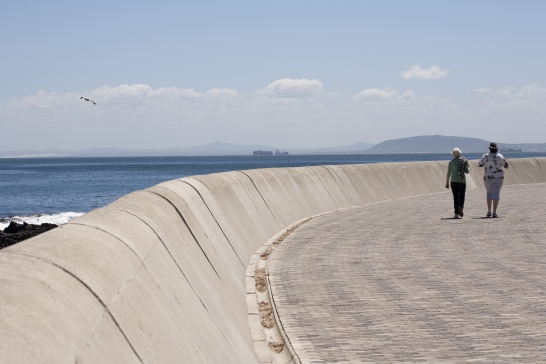Case-study /
The power of collaborative governance: Managing the risks associated with sea-level rise in Cape Town, South Africa


Cape Town coastal defense (photo credit: Sean Wilson)
Cape Town has an extensive coastline. The city’s coast provides economic opportunities, recreational spaces, and prime real estate, but also poses a risk to homes, businesses and public infrastructure from large storm surges and sand movement. These interactions have long been a feature of the city, but are becoming even more marked as the city continues to grow and the climate changes under increasing human influences, causing sea-levels to rise and storms to intensify. Changes in the nature and scale of these risks makes managing them more pressing, as well as more challenging and complex. This is particularly true in contexts such as Cape Town, where the level of socio-economic inequality is very high and where relatively new government mandates, structures and processes are being worked through.
The power of collaborative governance in managing the risks associated with flooding and sea-level rise in Cape Town has been the focus of a three-year research project undertaken by the University of Cape Town’s African Centre for Cities, the Stockholm Environment Institute and partner institutions, working closely with the City of Cape Town, and funded by the International Development Research Centre (IDRC).
The Cape of Storms booklet provides a synopsis of the findings from the study, written primarily for practitioners, residents, civic leaders, government officials and local politicians. It looks at the dynamic nature of the Cape coastline; how stormy seas, rising sea levels, ecologically sensitive beaches, dunes and river mouths, and urban development all interact along the coast, making it a complex space to manage. There are many competing visions for how the coast should be used and power struggles over who decides. The booklet looks at what is currently being done, led by the City of Cape Town, to develop a rigorous coastal policy and management framework for responding consistently and appropriately to the pressures of urban development, economic growth, addressing socio-economic inequality and a changing climate. It argues for a holistic approach that prioritizes institutional and ecological measures for buffering coastal risks, before resorting to more hard engineering solutions that are expensive, irreversible and do not deal well with uncertainty in nature and scale of emerging risks.
For further details on the project and other project publications visit theACC website, or alternatively you can view more about this projecton weADAPT.
